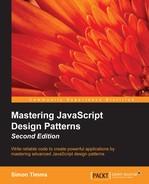Messaging and the associated patterns are large topics. Delving too deeply into messages will bring you in contact with domain driven design (DDD) and command query responsibility segregation (CQRS) as well as touching on high performance computing solutions.
There is substantial research and discussion ongoing as to the best way to build large systems. Messaging is one possible solution that avoids creating a big ball of mud that is difficult to maintain and fragile to change. Messaging provides natural boundaries between components in a system and the messages themselves provide for a consistent API.
Not every application benefits from messaging. There is additional overhead to building a loosely coupled application such as this. Applications that are collaborative, ones where losing data is especially undesirable, and those that benefit from a strong history story are good candidates for messaging. In most cases a standard CRUD application will be sufficient. It is still worthwhile to know about messaging patterns, as they will offer alternative thinking.
In this chapter we've taken a look at a number of different messaging patterns and how they can be applied to common scenarios. The differences between commands and events were also explored.
In the next chapter we'll look at some patterns for making testing code a little bit easier. Testing is jolly important so read on!
